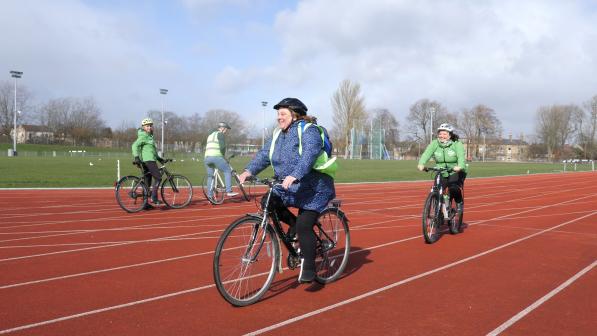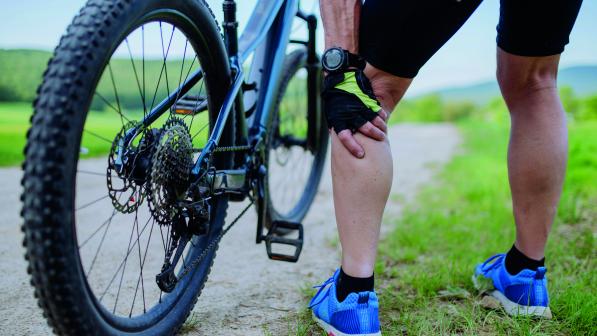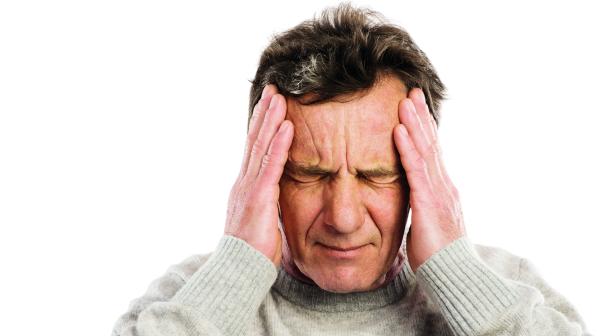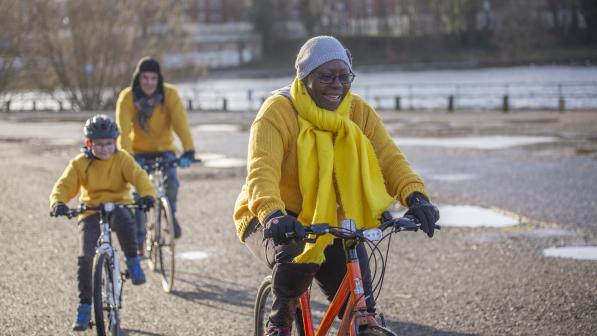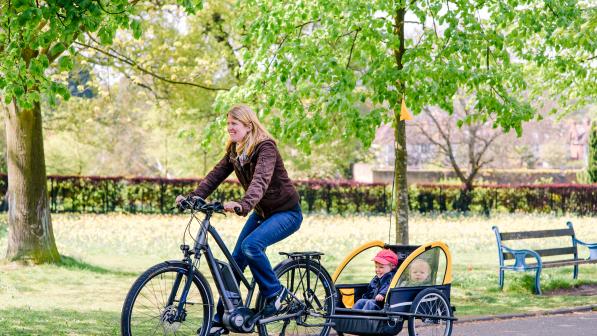Q&As: your health and cycling – joints

Tennis elbow
Q As a keen cycle tourer I suffer regularly from tennis elbow in my right arm. I have tried positioning my hands in different places on my drops, not gripping so tightly, and simply resting them on the bars – all to no avail.
Nick Howell
A Tennis elbow (lateral epicondylitis) causes pain on the outside of the elbow due to inflammation of tendons. It often occurs with repeated or strenuous overuse of the forearm muscles and tendons.
Lifting, gripping or twisting movements like turning a door handle or opening a jar may be painful, although pain can sometimes be constant. Despite the name, playing tennis is a relatively uncommon cause. Investigations are not usually needed.
Tennis elbow is usually self-limiting. Resting from exacerbating activities is the first thing to do. Try an ice-pack (such as a bag of frozen peas wrapped in a tea towel) twice a day for 10 minutes. Anti-inflammatory painkillers such as ibuprofen may help; try the gel form rubbed over the tender area.
If the pain is severe or you have difficulty using your arm, a steroid injection may help but is not thought to confer additional long-term benefits. Physiotherapy exercises and elbow supports may help. Rarely, if very troublesome symptoms persist despite all of the above, a specialist may advise an operation.
A bike seat that is too high will put extra pressure on your arms and shoulders. Consider dropping the saddle and moving it forwards slightly, or raise the handlebars. Your shoulders and arms should be relaxed with your elbows bent and your handlebar grip not too tight.
Changing handlebar positions can help but I see you’ve tried this already and are considering different bars; it’s difficult to know in advance whether this will help. Padded gloves or handlebar taping may help as an additional shock absorber. For prevention, try some forearm stretching and strengthening exercises – these can be found online.
Finally, it may worth considering whether something else you are doing off the bike is perpetuating the tennis elbow and, if necessary, reducing these activities.
Dr Matt Brooks
First published in the June/July 2012 edition of Cycle magazine.
Hand and wrist pain
Q My right hand and wrist have been painful for six months, compromising my ability to apply the front brake on my Brompton due to a loss of gripping strength. I was initially told by my GP that the cause of the pain, stiffness and swelling was seronegative arthritis, and was advised to take paracetamol.
No further treatment has been offered and I have been told that the medical staff ‘don’t know what the cause is’ with the unspoken conclusion that I’ll just have to get on with it.
John Mason
A It should be possible to diagnose the cause of your wrist and hand pain within the NHS. A diagnosis can often be made within the primary care setting using investigations such as blood tests and x-rays where necessary. However, where there is diagnostic uncertainty, or your symptoms are not adequately controlled, then a referral might be required.
Most wrist and hand pain will fall under the remit of either a rheumatologist or an orthopaedic surgeon specialising in this area. From the information you have given, I assume that you have not yet been referred to a specialist, though in my experience it would be unusual to be given a presumed diagnosis of seronegative arthritis without having been referred to a rheumatologist.
Seronegative arthritis refers to a group of inflammatory joint problems (including psoriatic arthritis and ankylosing spondylitis) which share certain features. It does not include the more common osteoarthritis (wear and tear).
The majority of long-term wrist pain is attributable either to arthritis (including osteoarthritis and inflammatory arthritis) or to soft tissue causes (like tendonitis or carpal tunnel syndrome). The likelihood of osteoarthritis increases with age.
Treatment depends on the cause. Painkillers and anti-inflammatories, splints, injections, physiotherapy and occasionally surgery all feature. Of all the painkillers, paracetamol is one of the safer ones if it is taken correctly.
A correct diagnosis is important since some conditions like rheumatoid arthritis can be treated with specific disease-modifying drugs to limit their progression. A review with your GP would be sensible to discuss the problem further. There are many good rheumatologists and orthopaedic specialists working within the NHS, and if a referral is required then your GP will know what is available.
Dr Matt Brooks
First published in the August/September 2012 edition of Cycle magazine.
Wrist worries
A After riding on a rough cycle path, a bump developed on my wrist. It feels solid but does not hurt when prodded. However, any twisting makes a loud click, and pressure to the heel of my hand can be excruciating. The doctor sent me to a physio who gave me a short blast of ultrasound and a brace. It hasn’t gone yet. What can I do?
Jane Devlin
Q A ganglion is a benign cyst filled with thick jelly, commonly found on the wrist. They vary considerably in size. If a ganglion is not causing any problems, it is often best left alone.
The traditional cure was to hit a ganglion with a heavy book (a bible). This bursts the cyst under the skin and the fluid is reabsorbed into the body. This technique is rarely recommended nowadays. In some cases, where the jelly-like fluid is not too thick, it may be possible to aspirate (suck up) the fluid with a needle and syringe. There is a chance that the cyst will recur as the cyst wall is not removed.
Surgical removal is the most successful permanent cure, with a smaller chance of recurrence. But given the current financial restrictions within the NHS, it is an operation which is not routinely funded in most areas unless the ganglion is causing a lot of pain or disruption of daily activities.
Soft tissue damage to the wrist triangular cartilage can be treated in the usual way (rest, ice, compression and elevation). Consider a short course of anti-inflammatories like ibuprofen if you can take them.
Padded cycling gloves should help. Look also at your position on the bike. Some cyclists find a lower saddle, raised handlebars and a shorter stem reduces pressure on the wrist, but you may need to experiment as each case will differ.
Change the position of your hands on the bars frequently and ensure your grip is not too tight. Bumpy tracks and rough terrain would seem best avoided.
If all else fails, you may need to rest while it improves. Different wrist supports may be worth a try.
Dr Matt Brooks
First published in the December 2013/January 2014 edition of Cycle magazine.
Broken ankle rehab
A I recently had an ankle operation and will be in plaster for six weeks followed by six weeks in a boot. After this, I have been told that I can start walking and cycling again. I was cycling 120 to 150 miles a week and doing a number of sportives and audaxes, which I want to get back to as soon as possible. Please can you advise me on the best training to regain my fitness?
David Morris
Q There are several general principles here and I’m afraid I’ll have to resort to a few clichés. Firstly, everyone is different so your recovery will depend on a number of factors, including the type of injury and surgery you had.
Next, the more you put in, the more you’ll get out, so do persevere with the exercises, tedious as they may be. Thirdly, don’t try to do too much too soon. Once back on the bike, build up your mileage steadily, listen to your body and don’t overdo it.
The internet is awash with anecdotal advice and personal experiences, some very useful and some less so. I came across several cyclists who were advocating use of a turbo trainer (if you have access to one) during the recovery period after ankle surgery, on the basis that it allows you to control the stress on the ankle joint.
Exercises to strengthen and improve flexibility of the ankle after the boot is removed will pay off in the long term. You could take the opportunity to concentrate on other activities like walking and swimming during the initial stages of your recovery. If you get the chance to see an NHS physiotherapist, they will be able to advise you on appropriate exercises.
If you need basic exercises and have not been provided with any, try typing ‘ankle exercises NHS’ into an internet search engine of your choice for some NHS hospital physio advice leaflets which can be downloaded. You might also want to consider seeing a sports physio for some more specific advice.
Dr Matt Brooks
First published in the June/July 2014 edition of Cycle magazine.
Shouldering the pain
Q I fell off my bicycle a couple of months ago and injured my shoulder; apparently the acromioclavicular ligaments got stretched. I am now able to cycle again but notice that my shoulder is very uncomfortable afterwards. I wondered if I am delaying the healing process by continuing to cycle, and I also wondered if there were any exercises that might assist with the healing process?
Mrs C Prosser
A The acromioclavicular joint (ACJ) is the articulation on top of the shoulder between the acromion part of the scapula (shoulder blade) and the clavicle (collar bone). It is stabilised by ligaments. When moving the arm above the head, the ACJ undergoes movement.
ACJ injuries may result from a direct fall on to the shoulder. They can ran range from minor ligament sprains which usually heal with conservative treatment (sometimes with a sling, initially followed by physiotherapy) through to more severe tears causing disruption and separation of the joint and occasionally requiring surgical repair.
This injury is sometimes called AC separation. Symptoms include pain over the ACJ and, in more severe cases, a visible or palpable deformity.
A physical examination and sometimes x-rays are required to make the diagnosis and rule out more serious injuries such as a fracture. In minor injuries, a combination of rest, ice, anti-inflammatories and physiotherapy may be all that is necessary.
If your shoulder is still very uncomfortable after a ride, it may be advisable to hold off cycling for the time being. Although exercises can be helpful to strengthen the joint, I would recommend seeking professional advice from a physiotherapist first, especially in view of your ongoing discomfort. ACJ exercises should usually begin when the ligament has healed and there is no pain.
Dr Matt Brooks
First published in the August/September 2015 edition of Cycle magazine.
Stiff little fingers
Q At the end of August, I returned from a three-month, 4,000-mile tour. The grips I used were the ergo type, and my gears were twist-grip Rohloff.
During the last month of the tour, I found that both my little fingers were becoming painful and difficult to bend, at their worst becoming stuck in the bent position. My left hand has since improved but my right hasn’t.
I visited the doctor, followed by a specialist appointment, during which I was given an injection of cortisone at the base of the finger. If this doesn’t work, I can opt for an operation.
Could you explain what this condition is and whether there is anything I can do to avoid it? I’m planning another long tour next year.
Chris Parkinson
A This sounds like trigger finger, a condition where one of the fingers (or thumb) may click or become stuck as you bend it towards the palm. It is often painful, and sometimes the finger becomes locked in a bent position and can only be released manually using the other hand.
Trigger finger is caused by a swelling or nodule on one of the flexor tendons, the tendons on the palm side of the hand that bend each finger. This then catches on the tendon’s covering sheath as it moves to bend (flex) the finger.
In most cases, it is unclear why certain people develop trigger finger, and there is usually nothing you can do to prevent it occurring. In milder cases, avoiding exacerbating activities may reduce the symptoms.
Rather than giving up cycling, though, it might be worth trying different grips to alter the position of your hands on the handlebar, just to see if this helps. If it doesn’t, other options for treatment include a local corticosteroid injection (which you have already had on one side), or surgery to release the affected tendon sheath.
Steroid injections are usually worth trying first as they are often effective and are generally safe. They work by reducing the swelling. However, it may take several weeks to see the full benefit. If a steroid injection is unsuccessful then a simple surgical procedure to release the tendon is the most likely ‘cure’. This is usually done as a day-case procedure under local anaesthetic, but it would be likely to stop you cycling for several weeks afterwards.
Dr Matt Brooks
First published in the February/March 2018 edition of Cycle magazine.
Gamma nail removal
Q I broke my hip about three years ago and had a gamma nail fitted to fix the fracture. The screw that holds the nail that fits laterally into the head of the femur is causing me pain. I can’t sleep on my right side and spurts of intense cycling (like a spinning or tackling a climb at pace) cause pain the next day.
Is it worth having the gamma nail removed to relieve the pain? I’d be interested to know of any complications and the length of the rehabilitation process.
mishinator, via the forum
A A gamma nail is inserted to fix certain types of fracture of the neck of the femur (thigh bone). These are commonly referred to as hip fractures. It consists of a large screw placed in the head of the femur and a nail, which goes down the middle of the shaft of femur.
Usually, the gamma nail will remain in place permanently, even after the fracture has healed. However, metalwork can sometimes cause pain or discomfort, particularly when a force is put on it, or in certain positions.
Depending on how troublesome the pain is, the gamma nail can be removed. This is a decision which should ultimately be taken with your orthopaedic surgeon, after weighing up the pros and cons.
Removal is usually a straightforward day-case procedure, and there is a good chance your pain will be improved. However, as always, there are possible complications, and these include re-fracture of the bone and wound infection.
In addition, a number of factors influence how easily the nail can be removed, including the length of time it has been in and whether bone has overgrown the end of it. The hole left by removal of the nail will refill with new bone, which forms over several weeks.
You will probably be advised to avoid high-impact activities during the first couple of months, but stationary and gentle cycling is usually permitted – check with your surgeon.
Dr Matt Brooks
